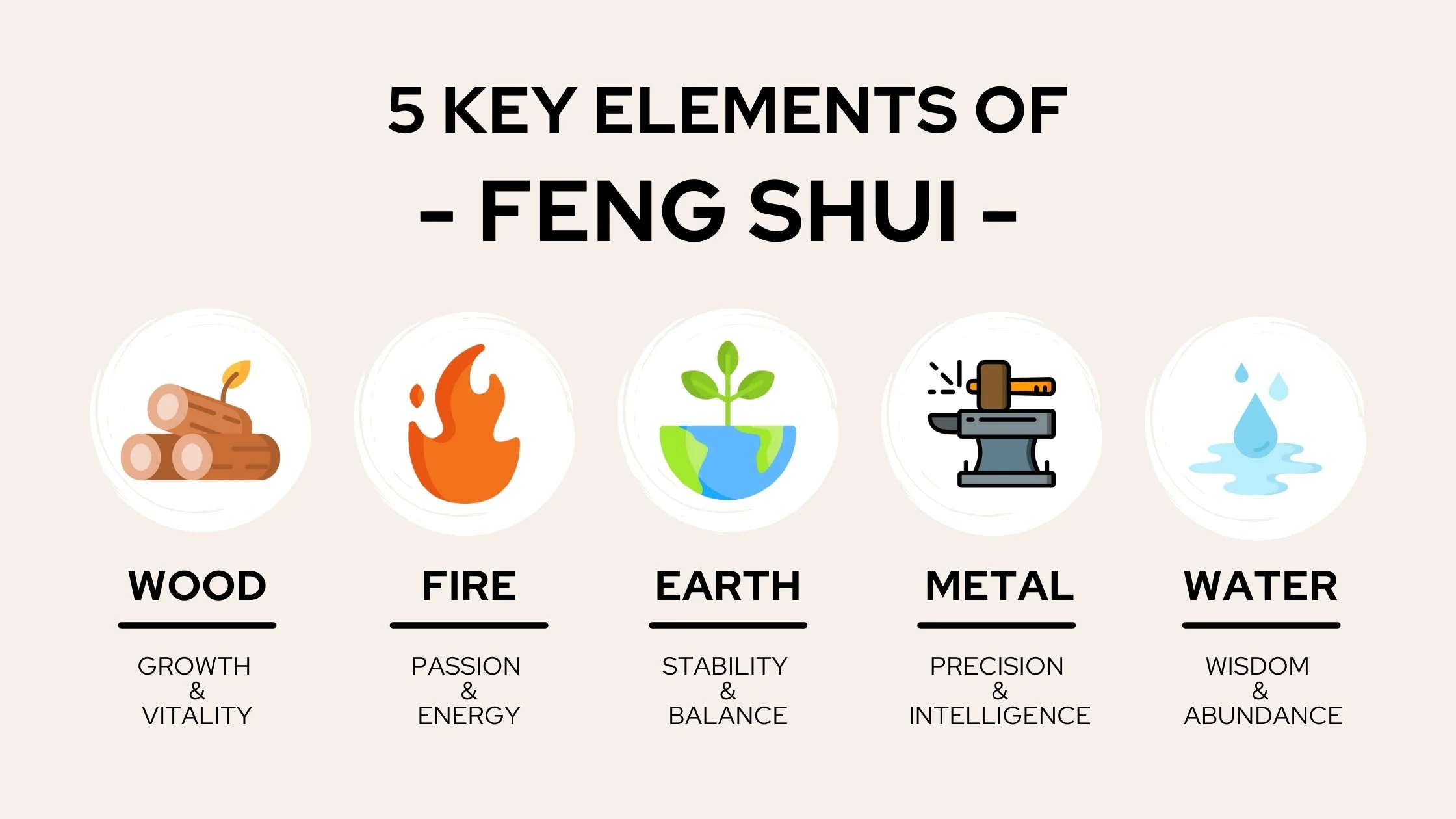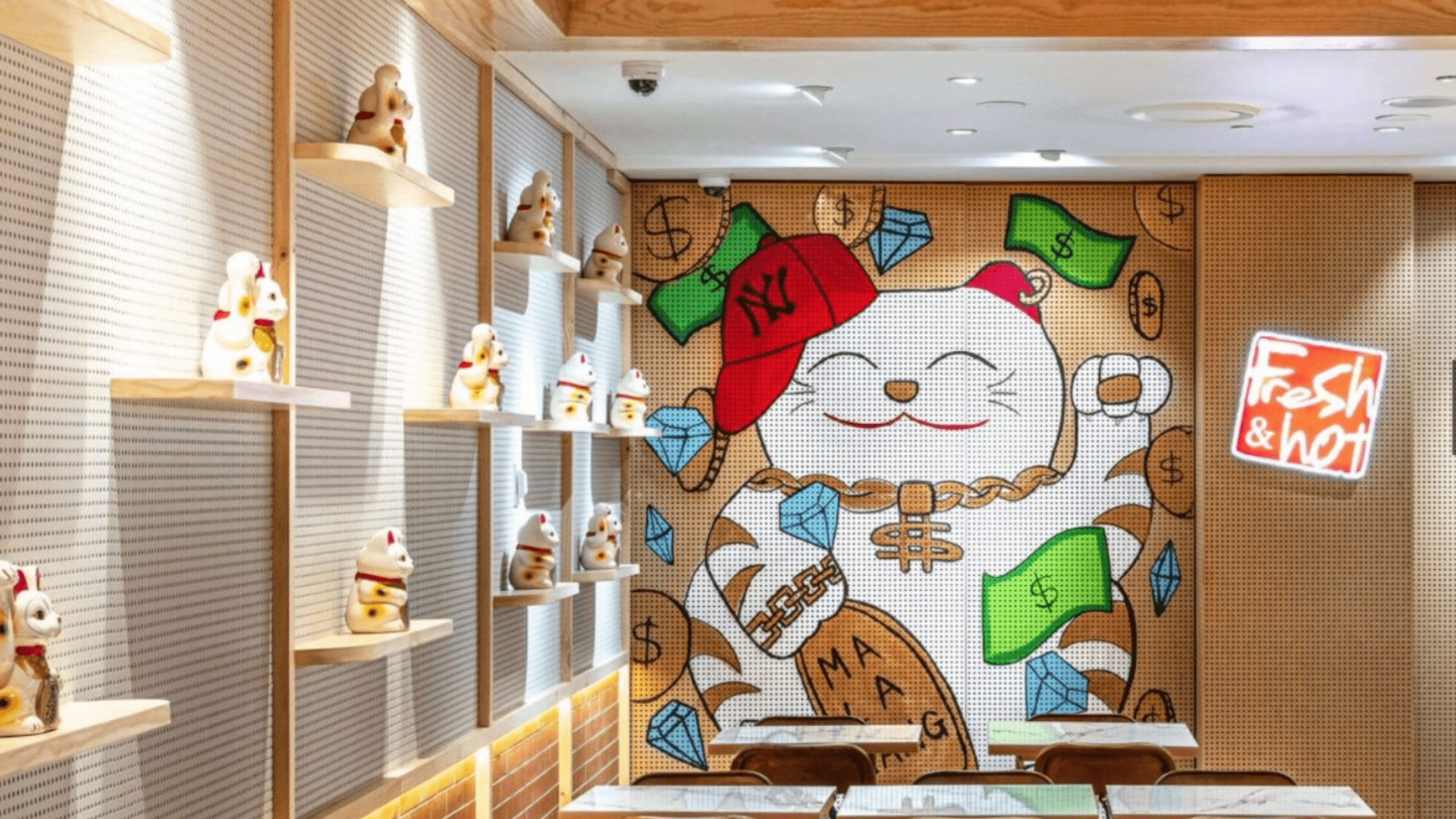Feng Shui In Interior Design Practices
We have had clients who considered the principles of Feng Shui as important to their project in one way or another. But is it a common practice for Interior Designers, especially when working with commercial outlets or business settings? In this article, we will dip our toes into this philosophy and hear some thoughts from our experienced designers.
What Is Feng Shui?
“Get that good energy going”
Feng Shui, an ancient Chinese philosophy, aims to find balance and harmony between elements. The term itself combines 'feng' meaning wind and 'shui' meaning water. Often described as the art of placement, Feng Shui involves strategically arranging elements to maximize the flow of energy. This practice goes beyond Western notions of comfort or aesthetics, emphasizing physical and mental well-being, success, and harmonious relationships through positive energy flow. Integrating Feng Shui into preliminary design concepts can lead to more efficient use of space and create welcoming, positive environments.
Jean de Lessard brought Feng Shui into Montreal Pharmacy | Image © Adrien Williams
What Are Feng Shui Elements?
Feng Shui has principles that focus on the five key elements:
Wood
Wood is related to growth, healing, and vitality, represented by green, blue, and teal colour, as well as columnar shapes. One of the best ways to introduce this element is using green houseplants.
Fire
Fire represents passion, inspiration, and visibility. It’s related to fiery colour such as red, bright orange, and triangle shapes. The best and easiest way to introduce this principle is through lighting.
Water
Water represents wisdom and connection, whether to the world or to other people. It’s tied with darker colour such as black or dark blue, and also wavy shapes.
Metal
metal has the qualities of joy, beauty, and precision. Try to use white, grey, metallic colour, or even circular shape to bring this element into your space.
Earth
Earth is related to self-care, boundaries, and nourishment. It’s related to earthy colour such as yellow, orange, and brown. Bring any rectangular shape or heavy object can incorporate this element into your space.
Is Feng Shui A Common Practice For Commercial Interior Designers?
After a quick Q&A session with our team of designers, we discovered that while many believe in the effectiveness of Feng Shui, it is not commonly incorporated into design projects. Most designers agreed that its use largely depends on client requests, with a higher prevalence in residential projects compared to commercial ones. Our interior designer, Katie Li, shared her experiences and insights on a previous project, Fresh and Hot Malatang, which was heavily influenced by Feng Shui principles.
3D Render | Fresh & Hot Ma La Tang Central Park | Interior Design by Vie Studio
We are proud to be the design team behind all branches of Fresh and Hot Malatang across Sydney. Inspired by the restaurant's name and the owner's strong belief in Feng Shui, we crafted design elements that radiate positive energy. According to Katie, our lead designer, we incorporated 'fire' elements and warm tones of red, orange, and yellow to create an inviting and vibrant atmosphere. These colors not only enhance the dining experience but also align with the principles of Feng Shui, believed to bring luck and prosperity.
3D Render | Fresh & Hot Ma La Tang East Village | Interior Design by Vie Studio
Katie expressed her excitement about the opportunity to participate in a project that incorporated Feng Shui, an element rarely addressed in commercial designs. However, the project was not without its challenges. One of the branches is located within a shopping centre, where the Retail Design Manager (RDM) requested the use of cooler tones to balance the overall warm ambiance. This request conflicted with the client's Feng Shui principles. After several discussions, our team proposed using a contrasting brick tone and cooler floor materials for the Central Park store. This solution achieved a balanced presence without overpowering the space, while still maintaining the essential Feng Shui elements and colors.
Central Park | Interior Design by Vie Studio
Katie guided us through the intricate design process, highlighting the collaborative effort with a Feng Shui master. He reviewed the design plan and identified specific areas that needed to be brightened to enhance the flow of positive energy. Katie also shared a thoughtfully curated list of furniture, lighting options, and materials, such as tiles and timber, that played pivotal roles in bringing the entire design vision to life.
Lucky Cat Graffiti Art and Wall Graphics | Fresh & Hot Ma La Tang Rhodes Central | Interior and Graphic Design by Vie Studio
At the client's request, we incorporated the 'lucky cat' wall art, a symbol of good fortune and one of his personal lucky elements. To infuse a fresh and dynamic vibe into the space, our team took an innovative approach by blending these traditional graphics with hip-hop elements. This creative fusion not only elevated the brand's image but also made it more approachable and relatable to the local community.
Exclusive Feng Shui Tips From our Designers
Based on our designers' past experiences, the team has compiled several key recommendations to enhance the Feng Shui of your space and boost its overall energy.
First, focus on three main areas: the entrance, the dining space, and the kitchen. The entrance is crucial, as it is believed to be the life energy of the restaurant. A clean, presentable, and appealing front door creates a warm and welcoming atmosphere, attracting good luck, abundance, and wealth.
In the dining area, ensure that customers have a clear view of the front door. This arrangement fosters a sense of safety, relaxation, and comfort. Incorporating plants and flowers is a highly effective Feng Shui cure, infusing the space with lively, healing, and positive energy.
Finally, the kitchen should be kept spotless. White is the ideal color choice here, as it symbolizes cleanliness, freshness, and sparks creativity.
In addition to these important points, there are certain elements to avoid in your interior design. Open ceilings with exposed overhead beams are considered unfavorable. Also, consulting with a Feng Shui master after signing a property lease or purchase agreement is a mistake; their expertise should be sought beforehand.
Ready to kickstart a new business but worried about Feng Shui? Check out our free consultations and begin your interior journey with us!







